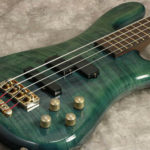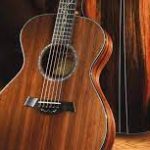Grappling with the X-175 feels a little like guitarcheology, but for a player used to more mainstream solid and semi-hollow electrics it’s a really interesting left-turn and a very rewarding experience. Indeed, its very quirks and limitations become a source of great inspiration in a studio context.
GUILD X-175 MANHATTAN
Mike Lewis masterminded the selection of a range of eight instruments that represent some of the most popular and sought-after guitars that Guild ever built.
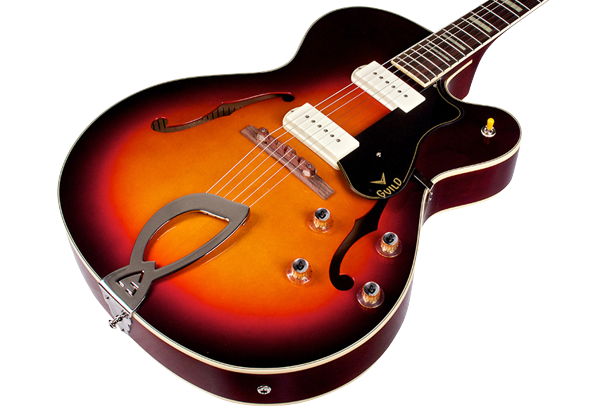
Mike Lewis masterminded the selection of a range of eight instruments that represent some of the most popular and sought-after guitars that Guild ever built.
What Is A Noise Gate Pedal?
The X-175 Manhattan is absolutely a child of the 50s; this is a six-string with few mod cons and no obvious safety net. The floating rosewood bridge seems arcane in 2013, but intonation compensation and thumbwheels for height adjustment at least allow some degree of adjustment.
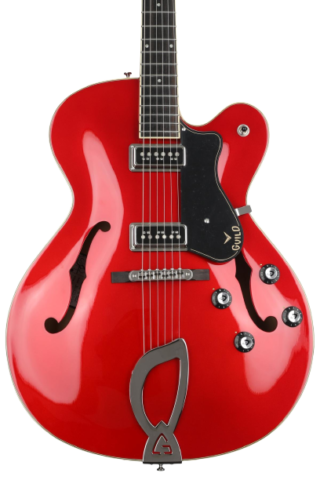
Straight out of the box, it’s a handsome beast, but tough to keep in tune. That said, even played acoustically, that bridge definitely imparts a woody character of its own and if you aren’t hitting the guitar too hard it’s possible to make it work.
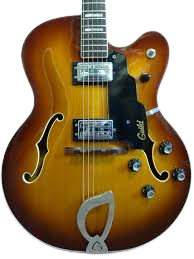
There are people who prefer to use a single pedal that meeAt the headstock end, Grover Sta-Tite tuners stay tight and look the part, but we’d have to either pin the bridge base or use the Brian Setzer carpet tape method to keep it in place before we’d risk the X-175 in a live environment.ts all their requirements, but these are generally called multi-effect pedals, are not to be confused with noise gate or effect pedals. The most important thing to remember about noise gate pedal features is the threshold level.
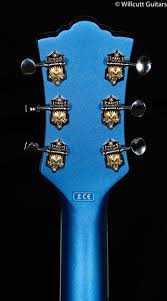
A careless right hand or even an extreme string bend can make it wander slightly, which tends to throw intonation and tuning out beyond acceptable tolerances. We can’t help wondering why features such as jumbo frets have been incorporated to appease modern players only for the bridge to be left unpinned.
The combination of a 9.5-inch (241mm) fingerboard radius, a vintage soft U-shaped neck profile and big frets make for a really inviting playing surface – just be prepared to allow this guitar to dictate the way you play to some extent.
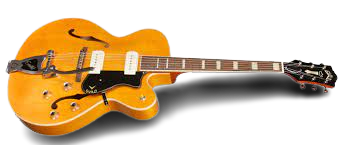
Another pragmatic departure from the original 1950s spec can be found in the shape of the peghead. For almost the first decade of production, Guild used an ‘open book’-style headstock silhouette very close to that used by Gibson and Epiphone. It’s no great surprise given that many members of Guild’s early workforce and indeed co-founder George Mann were formerly on the Epiphone payroll.
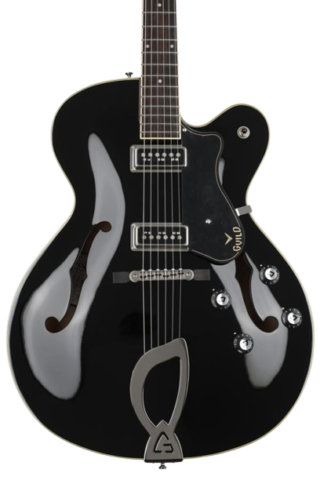
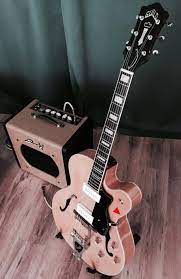
The only exception to this rule in the 1950s was the Johnny Smith Award Model in 1956, which included a raised section at the centre of the top in order to denote the guitar’s high-end status. A slightly softened version of this headstock shape was rolled out across other models in 1962 and became the standard within two years.
All Fender-era Guilds, including the Newark St Collection and the high-end US-built American Patriarch Series reissues have stuck to this ‘raised’ design, presumably to avoid having an awkward conversation with Gibson, which owns the trademark for the ‘open book’ shape.
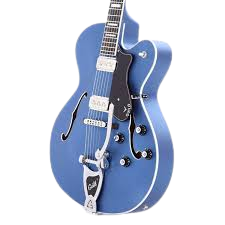
Sound
It might look like a pure jazzbox, but during recording sessions with the X-175 we managed to unearth a secret rock ‘n’ roll and R&B voice that’s to die for.
Dial in some suitably bright EL84 break-up, add lashings of spring reverb and take it to the bridge (pickup, that is), and it’s the kind of sound that begs for stabbing blues licks from the pre-Satisfaction Stones catalogue. Play down near the bridge with a hard pick for best results.
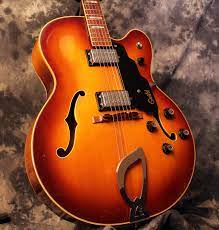
If your tastes are altogether smoother, keep it pretty clean and the X-175 has a real authenticity in the context of jazz, gypsy jazz and Western swing, and we’d bet that the rosewood bridge is a significant contributing factor. There’s something deliciously primitive about the ‘Frequency Tested’ single coils, too.
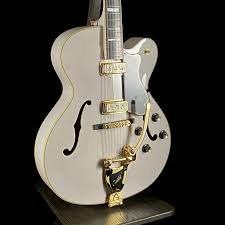
Hollowbodies have a reputation as delicate among solidbody players. And while you wouldn’t want to get too reckless with the Manhattan onstage, it’s anything but frail. Consider this: Thanks to a major package courier that shall remain nameless, the X-175 went on an unplanned two-week tour through a heat wave before I got it. When I finally received the package, I feared the worst. But the Guild was not just intact; it was also nearly in tune.
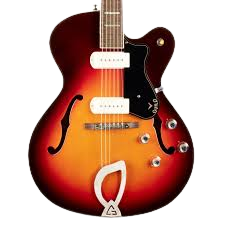
Ironically, the Manhattan’s ability to deliver so many bright and present tones means it handles some classically hollowbody tasks less well. Some aspiring Grant Greens might find the tone-attenuated neck pickup a touch too plonky for the sultriest, smokiest jazz settings. Still, even if it doesn’t have a ES-175’s buttery, wooly humbucker mass, the neck-position Dynasonic can still generate sweet, muted jazz textures, tight country swing sounds, and scads of thick, funky Jimmy Reed and J.J. Cale tones.
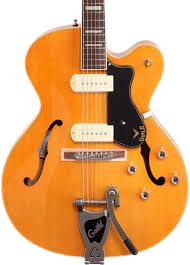
Though any hollowbody can feel like an armful if you’ve spent your whole life playing a Stratocaster, the Manhattan is invitingly, addictively playable, and will coax you along many unexpected creative vectors. The narrow jumbo frets make slinky bends a breeze. Dynamic fingerstyle and hybrid picking techniques both sound fantastic on the Manhattan—which can simultaneously generate piano-like resonant low tones from the bass strings and biting top end from the high strings in the way only a hollow body with well-balanced pickups can. But the Manhattan also feels great and sounds wrecking-ball huge in straight-ahead punk settings, and it’s a thrill to plug into a tape delay and a Marshall and chug in Johnny Thunders style, while hollowbody overtones dance at the edge of feedback.
Hollowbodies aren’t for everyone. But the X-175 Manhattan Special is a welcoming, inviting instrument whether you’re new to the type or a seasoned hollowbody pro. You can lose yourself in a lovely wash of hollowbody and Bigsby-quavered overtones in clean, jangly settings, unleash barrages of feral, high-calorie punk riffs, or meander through smoky, fingerpicked chord melodies … and always feel at home.
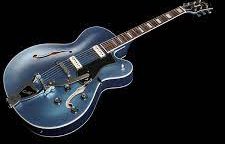
The Dynasonic pickups compound this versatility—exhibiting great range, balance, and sensitivity. At almost $1.5K, the Manhattan Special is expensive for a satin-finished, Korea-made instrument. But given the excellent build quality and real musical versatility of this Guild, the price will be fair for players whose bottom line is feel and sound.

A careless right hand or even an extreme string bend can make it wander slightly, which tends to throw intonation and tuning out beyond acceptable tolerances. We can’t help wondering why features such as jumbo frets have been incorporated to appease modern players only for the bridge to be left unpinned.
Guitar & Gear Articles





